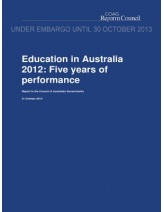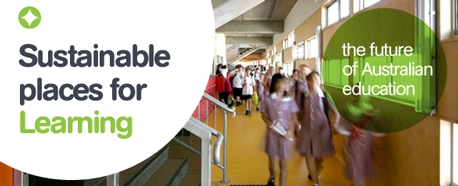 On 30 Oct 2013, the Council of Australian Governments (COAG) Reform Council’s released its report into the performance of our education system is a reminder that ‘where’ students learn is just as important as ‘what’ they learn and ‘who’ teaches them, says the Green Building Council of Australia (GBCA). A recent GBCA report shows that school buildings with green features can aid learning outcomes through properly managed thermal comfort, appropriate energy efficient lighting and plenty of fresh air.
On 30 Oct 2013, the Council of Australian Governments (COAG) Reform Council’s released its report into the performance of our education system is a reminder that ‘where’ students learn is just as important as ‘what’ they learn and ‘who’ teaches them, says the Green Building Council of Australia (GBCA). A recent GBCA report shows that school buildings with green features can aid learning outcomes through properly managed thermal comfort, appropriate energy efficient lighting and plenty of fresh air.
The report, Education in Australia 2012: Five years of performance, finds that, while Australian primary school students have improved in some areas, secondary school attendance has fallen and there has been little improvement in reading and numeracy.
Reducing the educational disadvantage experienced by Indigenous young people, young people from the lowest socio-economic backgrounds and from rural or remote places remains a challenge.
“Just as investing in quality teaching and quality resources is essential, so too is investing in quality learning environments,” says the GBCA’s Chief Executive, Romilly Madew.
“Too many students in Australia learn in school buildings that are too cold in winter, too hot in summer, badly lit and poorly ventilated. This affects student health and learning, teacher morale and school operational costs – as well as the environment,” Ms Madew explains.
The GBCA recently released a report that outlines up-to-date international research and case studies which can help schools invest in better buildings and better learning outcomes.
Download The future of Australian education: Sustainable places for learning.
How to achieve school buildings with green features
Some of the findings in the report include:
- Good lighting and ventilation can deliver a 41.5% improvement in health of students and teachers and a 25% improvement on test scores
- Students with access to good daylight in their classrooms progress 20% faster in maths and 26% faster in reading
- The classroom environment can affect a child’s academic progress by as much as 25%.
“Australia has more than 9,500 schools around Australia, and our goal is for students and teachers in each and every school to have access to sustainable places for learning, and for all students and teachers to reap the benefits of healthy, productive, efficient education facilities,” Ms Madew says.
“This report for COAG confirms that not all our students are gaining the quality education they deserve. One of the solutions is to invest in quality buildings that save taxpayer dollars. We call on governments, the education sector, industry and the broader community to commit to working together to achieve this. The result will be better outcomes for our students, our teachers, our nation and our planet,” Ms Madew concludes.
